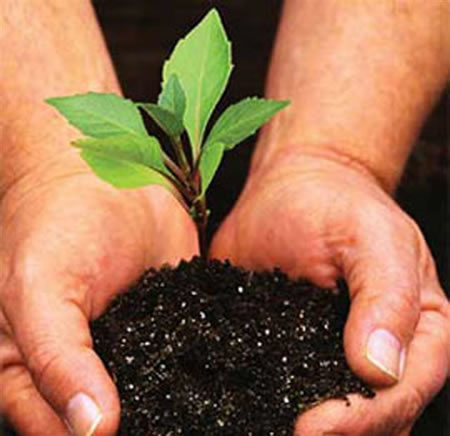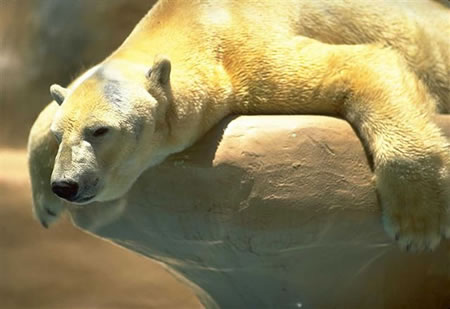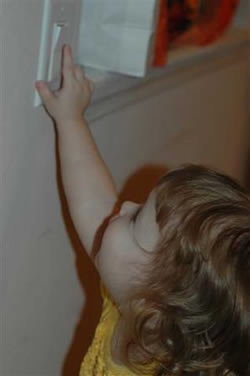Climate Change - A Threat to Humanity?
by Simone Poetscher
Global changes in climate and environment have become more important in our lives as we experience receding glaciers, melting polar ice caps and rising sea levels. Are these changes somehow related to the natural disasters of recent years? Were they the cause, or the consequence, of the enormous heat waves experienced in Europe and the United States or of the increase in the number and severity of hurricanes? How can we relate the traces of destruction left by, for example, El Niño and La Niña in South America, Australia, India, and Indonesia to these climatic changes?
Scientists believe that the climate has been constantly changing throughout history due to natural causes, but the impact of this change has never been felt in such tragic ways in recent years. Most scientists also agree that, in addition to natural causes, human activities have contributed to the growth of greenhouse gases in the atmosphere. Greenhouse gases are responsible for balancing the earth’s eco-system and for keeping the average global temperature on earth around 58.82°F (14.9°C). When more greenhouse gases are released, more heat is trapped in the atmosphere, just as it is in a greenhouse. The reason given for the increasing temperature on earth is that the atmosphere acts as a one-way blanket over the earth’s surface, absorbing longwave infrared radiation from the sun but rejecting thermal radiation from the earth. The result is an increase in temperatures and climatic changes.

Plant a tree. Internet.
Austria’s Contribution
Austria experienced some of these climatic changes when the 2002 floods along the Danube hit Salzburg and Upper Austria. Thousands of people were left homeless, and some lost their lives in the floods. A year later, Austria’s agriculture suffered from the hottest European summer of the century. While the average world temperature in the last 150 years rose by 33.44°F (0.8°C), the rise in temperature in Austria was more than twice as high, 35.24°F (1.8°C) over the same period of time. This rise has had an irreversible effect on Austria’s natural treasures: Glaciers have melted, and Austria’s areas of permafrost have decreased. The glaciers are now approximately half the size they were a hundred years ago. The Wurtenkees Glaciers in the Hohen Tauern have even lost three quarters of their size over the same period of time.

Polar bear. Internet.
Austria recently gave its support to the efforts of the European Commission to raise awareness of climate change. As Presidency of the Council of the European Union, Austria took part in the European Commission’s anti-global warming campaign ‘You Control Climate Change.’ The campaign was initiated between May 30 and June 6 in all twenty-five EU member states. The goal was to inform individuals of how they can each make a contribution to fighting climate change. “Action against climate change is a priority. This campaign complements and reinforces our political and legislative efforts. It makes clear to which extent we all are responsible for climate change and what individuals can and need to do to limit this threat,” said José Manuel Barroso, President of the European Commission.
Austria’s efforts are also apparent on a global level. An amendment on climate change, the Kyoto Protocol, was signed in 1997 as a first step towards lowering the overall emission of six greenhouse gases. Currently, the Kyoto Protocol has been endorsed by 164 countries and covers 65% of the world’s greenhouse gas emissions. The protocol specifies that by 2012 there will be a reduction of six greenhouse gases by at least 5% below the level that existed in 1990. In order to achieve this overall reduction, each of the participating countries has been given a certain amount of standards it has to meet.

Walking. Bob Adams.
The Kyoto Protocol and the United States
The United States is the largest source of greenhouse gases worldwide. Although Vice President Al Gore signed the protocol on behalf of the United States in November 1998, the protocol was never submitted to the Senate for ratification. The following remarks were published in an analysis of the Kyoto Protocol by the current Administration which believes that the Kyoto Protocol is flawed: “The Kyoto Protocol fails to establish a long term goal based on science, poses serious and unnecessary risks to the U.S. and world economies, and is ineffective in addressing climate change because it excludes major parts of the world.”
The European Initiative
Each citizen of the European Union accounts for eleven tons of greenhouse gas emissions, mostly CO2, every year. This shocking number demonstrates just how important it is for every single person to change their behavior. “Turn down. Switch off. Recycle. Walk,” goes the slogan of the European Commission’s campaign, to remind us of the most commonly known steps to be taken for a healthy environment. Let us look at some surprising details and see which additional advantages come when CO2 emissions are reduced:
Did you know that putting wet laundry in a dryer produces over 6.6 pounds of CO2 emission for each drying cycle?
* Drying our laundry naturally saves energy and guarantees our clothes a longer life!
* Driving your car produces twenty-two pounds of CO2 emission for each gallon of fuel burnt. How about walking, riding a bike, car-pooling, or public transportation?
* Low-pressure tires require more fuel to overcome resistance. By making sure your tires have the correct pressure you could save 2.5% in fuel and CO2 emissions!
* Become creative in your garden and plant a tree! An average size tree absorbs over thirteen pounds of CO2 every year!

Switch off. Internet.
Further information on how to save energy can be found at the web site of the European Commission: http://ec.europa.eu/environment/climat/campaign/takecontrol_en.htm
Emission reduction goals of the Kyoto Protocol apply to the following six Greenhouse Gases:
CO2 Carbon Dioxide
CH4 Methane
N2O Nitrous Oxide
PFC Perfluorocarbons
HFC Hydrofluorocarbons
SF6 Sulfur Hexafluoride
Simone Poetscher holds a masters degree in Communications and English from the University of Vienna. After supporting the Austrian Press and Information Service during Austria’s EU Presidency, she now works as a Project Manager at the Office of Science and Technology at the Austrian Embassy in Washington, D.C.
